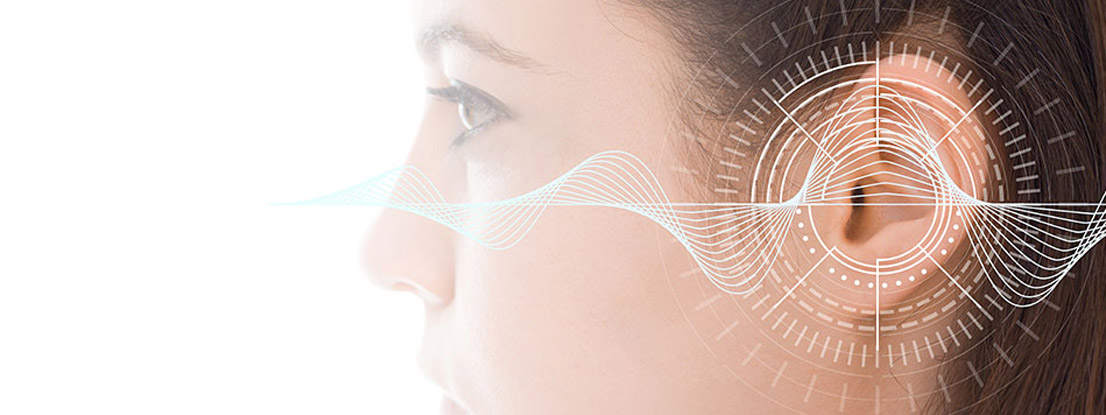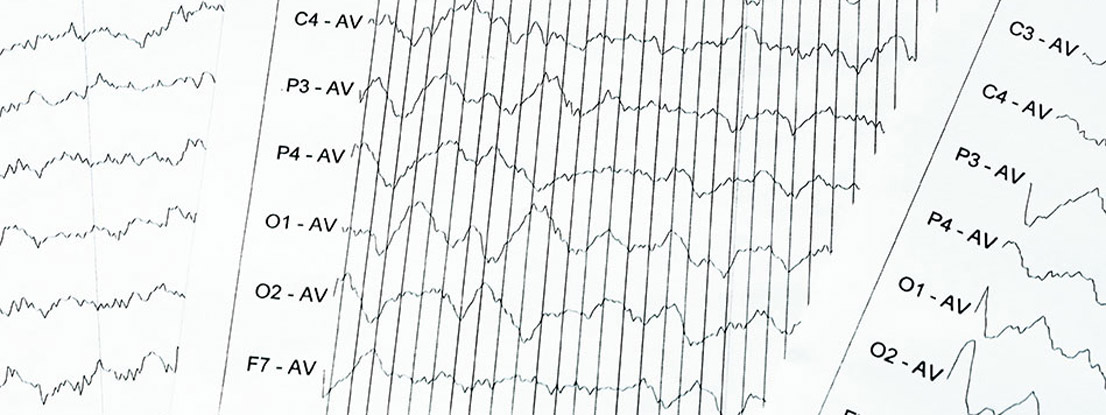1. What exactly are binaural beats?
sonamedic and binaural beats
Here you can learn more about the effects of sonamedic frequency therapy. A fundamental part of our sound journeys are the binaural beats. But what exactly is this phenomenon? To what extent have binaural beats been scientifically researched? When were binaural beats discovered? In which areas can they help us? And how exactly do binaural beats contribute to the effect of sonamedic’s sound journeys? In the following paragraphs you will find some answers to these questions.
Binaural beats – helping and healing
Binaural beats can help you feel more comfortable in different areas of life. They are helpful in prevention, stress reduction and deep relaxation. There is a lot of evidence from scientific studies that they can help improve cognitive skills, such as our ability to concentrate and remember. Certain frequencies can also give wings to your creativity! But even in acute states such as depression or anxiety, binaural beats – at the right frequency and duration – can have a beneficial and soothing effect [1].
Connection between mental states and the electrical activity of the brain
Brain electrical activity ranges from 0.1 to 30 hertz and can be considered as a parameter for mental states. Since Hans Berger’s development of electroencephalography (EEG), this relationship has been generally known. Binaural beats are a very gentle method of optimising mental states through brain wave modulation. It is a purely auditory, non-invasive stimulation and a very gentle form of sound therapy. The right sound can therefore have a healing effect on your well-being. All you have to do is listen to the sonamedic audio programme that suits you best [2].
History of Binaural Beats
In 1839, the German physicist Heinrich Wilhelm Dove discovered that a person perceives acoustic beats when two different sounds from left and right reach his ears. This discovery is called “binaural beats”. The biophysicist Gerald Oster then researched this phenomenon further: in 1973 he showed that the middle frequency, i.e. the compensating difference between the two tones, is generated by the brain. In order for binaural beats to be produced, the stimulus frequency must be in the range of brainwave electrical activity, i.e. between 0.1 and 30 hertz [2].
2. How do binaural beats come about?

Here is an example with hertz numbers for the generation of binaural beats in the brain: 400 hertz is recorded on the right ear with headphones, 410 hertz on the left. The listener consciously perceives a frequency of 405 Hz. This middle tone, which is generated in the brain, oscillates in a maximum oscillation range of 10 Hertz (the difference) and thus creates the “phantom tone” of the binaural beats. The optimum difference in inductive tones should be between a minimum of 2 hertz and a maximum of 35 hertz, and the optimum frequency should be between 400 and 500 hertz. The difference between the two tones determines whether delta, theta, alpha, beta or gamma waves are produced in the brain as the medium frequency [2].
How are binaural beats perceived?
The sonamedic frequency therapy offers you sound journeys and relaxation meditations in which the binaural beats work very gently in the background. This is important, because the binaural beats can be experienced in very different ways by each listener: Some people do not perceive anything at all, while others hear a very unpleasant humming sound. With a creative sound setting, this can be remedied in a targeted manner. How exactly, you will find out in the next paragraph.
Binaural beats, embedded in real acoustic enjoyment
In sonamedic frequency therapy the binaural beats are embedded in relaxing sounds and optionally accompanied by the voice of a professional speaker. The narrator gives you positive suggestions and strong images for your accompanied sound meditation. We offer you an effective triple combination for your ears and well-being: Binaural beats combined with relaxing music and positive autosuggestion. Just make yourself comfortable and go with your headphones on the sound journey meditation of your choice. Positive effect most likely
3. what are the frequency ranges?

Electric brain waves – the 5 frequency ranges
In neurology, there are 5 defined frequency ranges of electrical brain waves that provide information about various mental states: Delta, theta, alpha, beta and gamma frequencies. Here you will find an overview of which frequencies are assigned to which state and which hertz number according to the EEG:
Delta frequency range: 0.1 to 4 Hertz
Theta frequency range: 4 to 8 Hertz
Alpha frequency range: 8 to 13 Hertz
Beta frequency range: 13 to 30 Hertz
Gamma frequency range: over 30 Hertz
1. Delta frequency range: 0.1 to 4 Hertz
State: Dreamless sleep; Delta waves are active when we are in the dreamless phase of deep sleep.
2. Theta frequency range: 4 to 8 Hertz
State: REM phase, dream, drowsiness
3. Alpha frequency range: 8 to 13 Hertz
– State (with eyes closed): Relaxation, relaxation, imagination, memories
4. Beta frequency range: 13 to 30 Hertz
State: Awake consciousness, perception, everyday life, thinking, logic
5. gamma frequency range: over 30 Hertz
State: Meditation, focus, concentration, learning
4. What can binaural beats help me with?

The long-term memory improves its functions
A study published by Springer-Verlag in 2017 shows that the right frequencies can have positive effects on long-term memory. In the experiment, 32 participants were exposed to different frequencies in the right and left ear via headphones, resulting in binaural beats in the test subjects’ brains. 16 participants in the experiment formed beta frequencies and the other 16 theta frequencies. The beta frequency group showed a significantly better ability to remember previously spoken words. The study concludes that beta frequencies can improve memory performance – without any training at all – and recommends further scientific research in this area [3].
Reduction of anxiety and depression
Scientifically based meta-analyses lead to the conclusion that sonication with binaural beats can also have positive effects in relieving pain and alleviating anxiety. Duration, frequency and the frequency selected play an important role in this context. In order to make generally valid statements, it is necessary to document further observations. We at sonamedic also want to contribute to further scientific research and positive confirmation of the effectiveness of binaural sounds. You will find information on this in the next paragraph [5].
Cooperation between sonamedic and the special clinic Schloss Gracht
Since spring 2019, sonamedic has been offering its productions as an induced relaxation method at Schloss Gracht, a special clinic for psychodynamic psychiatry, psychotherapy and psychosomatics. Under the medical direction and supervision of Dr. med. Michael Bornheim and Dr. med. Eva Kalbheim, sonamedic frequency therapy is offered to patients suffering from forms of burn-out or depression. Here, too, patients are exposed to suitable sound meditations via headphones on the left and right ear in order to achieve positive effects. We are very pleased about this cooperation and hope that the results will contribute to further scientific research and recognition of binaural sounds in the near future.
Prevention through sonamedic binaural audio programmes
Diseases of civilisation such as burn-out or depression can arise as a result of too much stress. With sonamedic’s binaural sound journeys you can become preventively active and charge yourself preventively with the necessary portion of relaxation, motivation and well-being. Simply tune back into the right frequency – relaxed and without stress and pressure to perform! All you have to do is listen to the relaxation meditation that suits you best – just plug your headphones into your smartphone and select your desired meditation in the sonamedic app. You are guaranteed to find what you are looking for in our numerous categories, from stress reduction to mindfulness and concentration. Within only 10 minutes you can vibrate your brain to a frequency that is better for you, even beyond your sound experience. Your sonamedic team wishes you a lot of fun, real listening pleasure and great effects!
Scientific sources
(1) Lorenza S. Colzato, Hayley Barone, Roberta Sellaro, Bernhard Hommel: More attentional focusing through binaural beats: evidence from the global–local task. In: Psychological Research (2017) 81:271-277, published online: 26 November 2015, Received: 27 July 2015 / Accepted: 13 November 2015 / The Author(s) 2015. This article is published with open access at Springerlink.com on https://link.springer.com/article/10.1007%2Fs00426-015-0727-0
(2) Georg Schamber, Eva Meinicke und Thomas Schäfer: Stressreduktion durch Binaurale Stimulation? Eine experimentelle Untersuchung zum Effekt einer Alpha-Stimulation auf die psychophysiologische Entspannungsreaktion. In: Zeitschrift für Neuropsychologie, 26 (4), 2015, page 239–248, https://econtent.hogrefe.com/doi/pdf/10.1024/1016-264X/a000155
(3)Miguel Garcia‑Argibay, Miguel A. Santed, José M. Reales: Binaural auditory beats affect long-term memory. Psychological Reasearch. Received: 20 May 2017 / Accepted: 6 December 2017, © SpringerVerlag GmbH Germany, part of Springer Nature 2017, available on https://doi.org/10.1007/s00426-017-0959-2
(4) Christoph S. Herrmann, Daniel Strüber, Randolph F. Helfrich, Andreas K. Engel: EEG oscillations: From correlation to causality. In: International Journal of Psychophysiology (103), 2017, page 12-21, available with access on http://www.40hz.net/herrmann-2016-int-j-psychop.pdf
(5) Miguel Garcia‑Argibay, Miguel A. Santed, José M. Reales: Efficacy of binaural auditory beats in cognition, anxiety, and pain perception: a meta‑analysis. In: Psychological Research (2019) 83: page 357–372. Received: 18 January 2018 / Accepted: 26 July 2018 / Published online: 2 August 2018, Springer-Verlag GmbH Germany, part of Springer Nature 2018, available on https://doi.org/10.1007/s00426-018-1066-8




